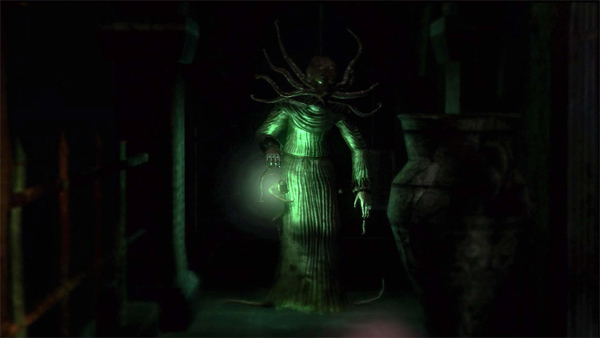An Interview with the Creators of Starseed Pilgrim
Yesterday, after my lunch but before theirs, I interviewed Droqen (i.e., Alexander Martin) and Ryan Roth, the developer and sound designer of Starseed Pilgrim, a beautiful, mysterious game about “tending a symphonic garden, exploring space, and embracing fate.” It’s six dollars and I am extremely confident your computer can run it. I was kind of awkward and shy, predictably, but the two of them did great. We did it as a video because that was expedient, but if I were you I would treat it like a podcast — listen to the audio; don’t feel like you’ve got to watch. We talked mostly about video games — Starseed Pilgrim, Droqen’s other games, stuff we had all played and enjoyed, and things we didn’t like so much. But I don’t think you have to like video games very much to find a lot of what they said interesting. I made some annotations (indexed by time code) to provide context and further information for the things we discussed; click past the fold to see them. READ MORE >
Vidja Games and Mystery
Narrative is rarely any fun without mystery. You can get mystery in a lot of ways. In a creative writing class my senior year at Butler, my teacher Susan Neville passed a story around the room. I don’t remember what the story was. I think it was about two people in a car. I think they were young people. Susan pointed out that though the characters were taking turns speaking, neither one was responding to what the other person had to say. She said that if you listened to the way people really speak to each other, this turned out to be mostly true. We don’t listen: we wait for our turn to speak. What she didn’t point out was that this stood in stark contrast to the way college students tend to write, wherein a pair of extremely attentive conversationalists trade ideas and information in the collaborative pursuit of synthesis, consensus, etc. What she also didn’t point out was the way that this corrodes the mystery of the story: when two characters with ostensibly different interests agree completely on the direction of a conversation (or even on the terms of their own disagreement), the writer’s intent becomes glaringly obvious. So there is one way of creating mystery. Make your characters talk past each other.
Another way is to present an image so breathtaking, so rich with implications, and yet so beyond our grasp, that mystery can’t help but form. Another way is to create a character who makes interesting decisions that make us wonder why they made the decisions. Another way is to make thoughtful, sublime choices in language. Another way is to make thoughtless, sublime choices in language. And so on. Another way, but often a rather blunt instrument, is simply to withhold information. If your reader doesn’t know what’s going on, who’s doing it, or why, that counts as mystery, right? Well, sure. But maybe not the good kind.
The old Nintendo games tended to be naturally mysterious. There were many reasons for this. One is the graphical limitation of the system. NES games could only display a small number of colors with limited animation. It didn’t have a lot of pixels to work with, either — it was a very low-res system. This made the system’s representations abstracted, and, as such, a little mysterious. Sometimes (often) you literally couldn’t tell what you were looking at. READ MORE >

